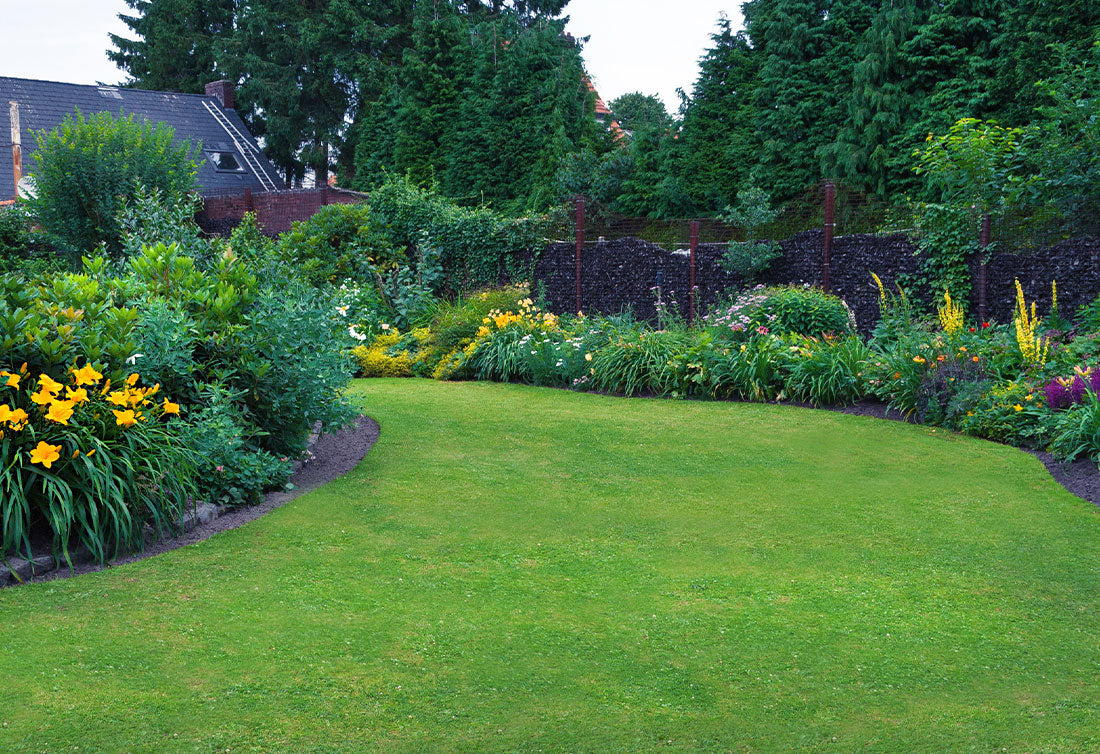How To Weed and Feed Your Lawn

Weed and feed your lawn – everything you need to know
For a gardening enthusiast there are not many better sights than walking out onto a beautifully green, weed-free lawn. However, many will know that achieving a lawn like this is not particularly straight forward. After fierce winters, many of us are left with sad-looking lawns but before you head inside with disappointment or before you rush to the local garden centre to stockpile on bottles, we’re here to talk you through everything you need to know when it comes to weed and feed.
What is weed and feed?
Weed and feed products are designed to fertilise the grass and control the weeds at the same time. They are timesaving in the sense that they eliminate the need to both ‘feed’ and ‘weed’ separately, which helps to maintain a good work-life balance. Many weed and feed products combine fertiliser and herbicide which complement each other well - the fertiliser helps promote healthy grass growth, while the herbicide prevents unwanted weed growth from occurring on your lawn.
When should I weed and feed my lawn?
As with most lawn care tasks, timing is key. If weed and feed is applied too early, then you may not target the weeds that have not yet started to grow. The weeds will survive the treatment and you would have wasted the product. Similarly, if you wait too long before applying your weed and feed, then your grass won’t get the nutrition it needs to help it grow and flourish. Therefore, weed and feed products are best applied in the early spring, just around the same time that you would give your lawn the first trim of the season.
Do pay attention to the weather and keep an eye on the weekly weather forecast. There is no point in applying your weed and feed product if rain is on the way. Those spring showers shortly after an application will just dilute the herbicide and it will not be effective. If you are caught off-guard by a sudden and unexpected downpour, it is advisable not to reapply the treatment, because then you run the risk of overfeeding your lawn.
How often should I weed and feed my lawn?
Many gardeners tend to firstly apply weed and feed during the month of April and then do it again in the month of September or October. However, it all depends on the type of weed and feed product you are using. This is because each manufacturer has different labels and different suggestions. Always refer to the product label for more information.
Tips for successful weed and feed application
Even if the weather is on your side and you have chosen the right time of year, things can still go wrong. Below are a few tips which may help you to increase the chances of a successful application.
- Try and apply your weed and feed product when your grass is between 3 to 5 inches tall.
- Irrigate, or ideally use a sprinkler, to lightly moisten your lawn bed before application.
- Don’t water your lawn for at least 48 hours after using weed and feed.
- Always follow the manufacturer’s instructions.
What is the best weed and feed for lawns?
If grass isn't the only thing growing on your lawn, and weeds and moss are becoming a problem then you will need a weed and feed. Rest assured, there will be a lawn treatment that can help, but they don't all do an excellent job every time. Some weed and feed might well work excellently for your grass but fall short in controlling weeds and moss, while others might work wonders at eliminating weeds and moss but fail to feed your grass.
We have done the hard work for you and have compiled a list of tried and tested weed and feed products. Some, with added iron, also have a detrimental effect on any present moss, and could be considered to have a triple action effect. You can view the products here.
We hope you have found this guide to weed and feed useful.
